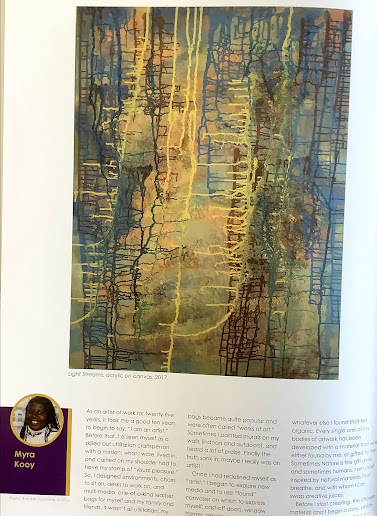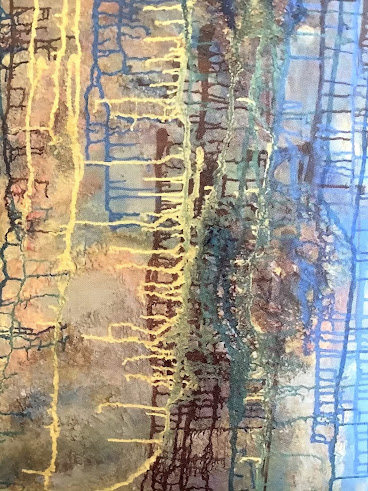I so enjoyed reading The Great Indoors. Every chapter was enlightening and interesting, the science made accessible and relevant. Emily Anthes wisely introduces readers to cutting-edge insights and ideas through a series of first person experiences of applied science.
I have been isolating in place since March 11, 2020. With very few trips into the world other than neighborhood walks; my life has been spent indoors. Our son, like millions of people, has worked from home. School closings meant our neighbor's children were educated from home.
Anthes begins her journey at home, the "indoor jungle" of microbial and insect species that we share our space with. Of course, many of these originate in our own bodies! Our personal bacteria, and those of our pets (who introduce outdoor microbes) create a personal, unique biome that we recreate wherever we take domicile.
Next, Anthes stops at the hospital. Those bacteria we share in our home get shared in the hospital rooms, persisting even after cleaning. Sure, we have come a long way; what more can be done? Anyone who has been overnight in a hospital knows the issues: sounds and lights that prevent sleep and raise stress; the awful views of roofs or walls from the windows. Studies prove that patients recuperate quicker and better when they have private rooms with a view.
Buildings themselves lead to the health issues that send us to hospital care in the first place. Giving people ways to exercise, encouraging the use of walking and stairs can help. Starting in elementary schools. Anthes visited a school built to encourage movement and good eating choices.
Finding the balance between privacy and communal interaction is a continuing workplace challenge. Cubicles are being replaced by unassigned workstations. I remember wearing a sweater in summertime air conditioning, and short sleeves in overheated winter offices. What is the best option--working in a crowded room or isolated in a private office?
The chapter on building to accommodate all people, including the disabled and handicapped, has broadened to include people on the Autism Spectrum Disorder. Since every Autistic person has different needs, no one plant fits every need. We meet people seeking a space that allows independent living.
The history of prisons is a dark one, for even the 'improvements' were harsh. Quakers believed in reformation through isolation that allowed contemplation and repentance. The Philadelphia penitentiary built to enforce this isolation morphed into today's solitary confinement, which has proved to exacerbate mental health issues. Anthes visits a prison that feel home-like, with direct supervision and interaction between staff and inmates, have proven successful. Of course, the real solution to mass incarceration is investing in communities and addressing the root causes of crime.
Smart devices are all the rage. Some of us already are living a Jetsons life with high-tech homes. Robot vacuums and programmable appliances are fast becoming old technology. There are mirrors that can detect cardiovascular issues based on skin color. Senior residential floors that alert staff to falls. The implications are both comforting and disconcerting!
Soon after we moved into our retirement home, our community suffered a rare flood that destroyed thousands of home basements. It took years for most to haul out the damage and make repairs, with local contractors overwhelmed with work. We were lucky; situated on a hill, and having addressed basement cracks, we stayed dry. But for millions, flooding and rising water levels is a continual threat. It is amazing to read about floating homes and how houses can be retrofitted on a budget.
Last year I read about a woman's experience of live on Mars....Well, at least life in a biodome that recreated what it would be like to live in community on Mars. Scientists are studying what kind of buildings would be needed to live on the moon or on another planet. Even IKEA has been involved.
Every part of your life is addressed in The Great Indoors. Home, health, learning, independence, and the future.
I received a free book from the publisher through Goodreads.
The Great Indoors: The Surprising Science of How Buildings Shape Our Behavior, Health, and Happiness
by Emily Anthes
Scientific American / Farrar, Straus and Giroux
Published June 23, 2020
ISBN0374166633 (ISBN13: 9780374166632)
from the publisher
Modern humans are an indoor species. We spend 90 percent of our time inside, shuttling between homes and offices, schools and stores, restaurants and gyms. And yet, in many ways, the indoor world remains unexplored territory. For all the time we spend inside buildings, we rarely stop to consider: How do these spaces affect our mental and physical well-being? Our thoughts, feelings, and behaviors? Our productivity, performance, and relationships?
In this wide-ranging, character-driven book, science journalist Emily Anthes takes us on an adventure into the buildings in which we spend our days, exploring the profound, and sometimes unexpected, ways that they shape our lives. Drawing on cutting-edge research, she probes the pain-killing power of a well-placed window and examines how the right office layout can expand our social networks. She investigates how room temperature regulates our cognitive performance, how the microbes hiding in our homes influence our immune systems, and how cafeteria design affects what—and how much—we eat.
Along the way, Anthes takes readers into an operating room designed to minimize medical errors, a school designed to boost students’ physical fitness, and a prison designed to support inmates’ psychological needs. And she previews the homes of the future, from the high-tech houses that could monitor our health to the 3D-printed structures that might allow us to live on the Moon.
The Great Indoors provides a fresh perspective on our most familiar surroundings and a new understanding of the power of architecture and design. It's an argument for thoughtful interventions into the built environment and a story about how to build a better world—one room at a time.
















































